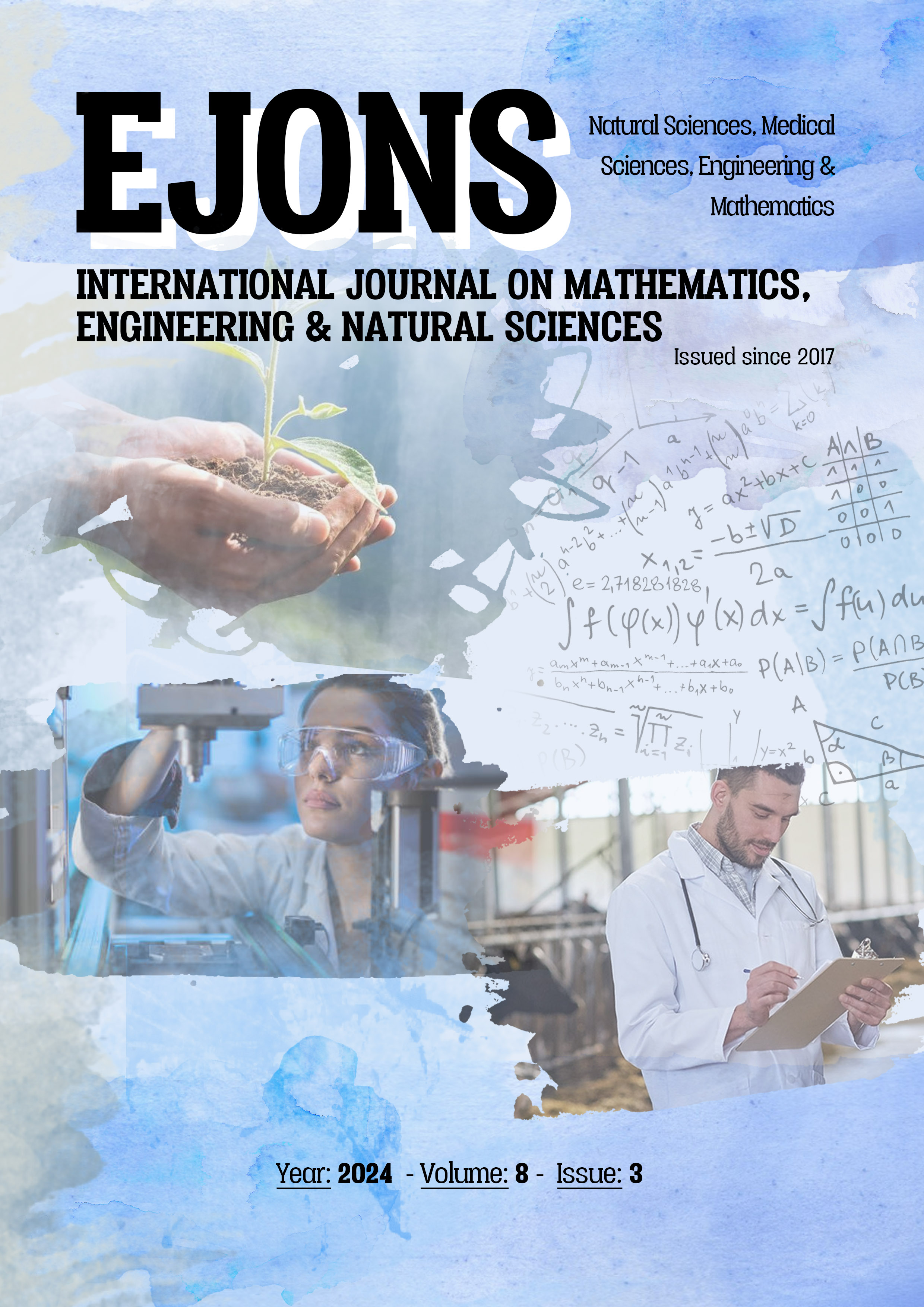An Analysis of the Causes and Cost Implications of Foreign Object Damage (FOD) in the Aviation Industry
DOI:
https://doi.org/10.5281/zenodo.13825422Keywords:
Foreign object debris, Foreign object damage, Flight safety, Airport technologies, Runway detectionAbstract
When classifying the causes of aircraft accidents and incidents, human factors, technical factors (materials, maintenance, repair, overhaul, etc.), environmental factors, and other factors come to the forefront in aviation. Aircraft damage caused by objects other than the aircraft itself is defined in the literature as Foreign Object Damage (FOD). Due to FOD, many aircraft accidents have occurred from the past to the present, and some of them have resulted in fatalities. In aviation, the term FOD refers to any foreign particle or object that comes into contact with an aircraft or system and causes damage to the aircraft. Additionally, the acronym FOD has been used in the literature to refer to Foreign Object Debris, which are unwanted substances found in airports that can damage personnel, aircraft, and equipment. FOD is a major technical problem in the aviation maintenance industry that reduces the safety level of an aircraft, but this problem can be controlled and minimized by using accurate and sensitive methods. For this purpose, a number of automated methods have been developed to detect foreign object debris (waste) that can cause damage, such as Argos AI-FOD, X-Sight –FODetect, Trex Enterprises -FOD Finder, Tarsier Radar, FODRAD, synthetic aperture radar, convolutional neural networks, etc., used in airports. When examining the published literature on aircraft accidents and incidents, it is understood that the "Human Factor" is examined more frequently; however, there are many cases caused by FOD. This study focuses on the sources of foreign object damage in aviation and methods to prevent foreign object damage incidents, and also examines the safety and cost impact of these incidents on aircraft within the scope of the study
References
Boeing Comp,- Aero No.1, B. Bachtel, 1998.
Basut, F. (2024). Yabancı Madde Hasarı Kaynaklı Hava Aracı Kazalarında İnsan Faktörünün Değerlendirilmesi: Concorde Uçak Kazası Örneği. (Yüksek Lisans Tezi). Gebze Teknik Üniversitesi Lisansüstü Eğitim Enstitüsü, Gebze.
Changwa, H. (2022). FOD Detection Modelusing Virtual Image and Drone. (Master Thesis). Seoul National University Department of Architecture & Architectural Engineering, South Korea.
Diler, A., 2006. KUŞ ÇARPMALARI. UTED Aylık Havacılık Dergisi, 174, 33-36.
Düzgün, M., Çotuksöken, B., Kul, R. H., Türkoğan, A., Aydoğan, S., Tezer, G., Vatandaş O. E., Uyanık H., Saraçyakupoğlu T. (2019), Uluslararası Havacılığın Temelleri, 1. Basım, Nobel Yayınevi.
El-Sayed, A. F. (2019). Bird Strike in Aviation, CRC Press, Taylor&Francis Group.
El-Sayed, A. F. (2022). Foreign Object Damage and Debris in Aviation, (pp. 6). CRC Press, Taylor&Francis Group.
FAA Advisory Circular No:150/5210-24, Airport Foreign Object Debris (FOD) Management, 09/30/2010.
Insight SRI, (2008). The Economic Cost of FOD to Airlines.
Rafiq, H. A., Manarvi I., A., Iqbal, A. (2013). Identification of Major FOD Contributors in Aviation Industry, Business Science Reference.
Przedpelski, Z. J., Casadevall, T. J. (1991). IMPACT OF VOLCANIC ASH FROM 15 DECEMBER REDOUBT VOLCANO ERUPTION ON GE CF6-80C2 TURBOFAN ENGINES. Volcanic Ash and Aviation Safety: Proceedings of the First International Symposium on Volcanic Ash and Aviation Safety, 2047, 129-135.
SHT-OLAY: Sivil Havacılık Emniyet Olaylarının Raporlanmasına Dair Talimat, SHGM, 31.12.2012, Değişiklik No.2.
Sivil Havacılık Genel Müdürlüğü, Emniyet Olayları Yıllık Bülteni -2020.
Sivil Havacılık Genel Müdürlüğü, Emniyet Olayları Yıllık Bülteni -2021.
Sivil Havacılık Genel Müdürlüğü, Emniyet Olayları Yıllık Bülteni -2022.
Sivil Havacılık Genel Müdürlüğü, Apron Operasyonları Emniyet Kılavuzu.
Özbakır, Y., (1996) . Kuş Çarpması. Türk Hava Kuvvetleri Uçuş Emniyet Dergisi, 148, 20-23.
Özkan, V. (2021). Havaalanı Pat Sahasında Bölgesel Evrişimsel Sinir Ağı Mimarileri ile Yabancı Madde Tespiti. (Yüksek Lisans Tezi). Erciyes Üniversitesi Fen Bilimleri Enstitüsü, Kayseri.
Şahar, H., 1996. MEYDANLARDA UÇAK-KUŞ ÇARPMALARINI ÖNLEMEK İÇİN ALINAN TEBİRLER. Türk Hava Kuvvetleri Uçuş Emniyet Dergisi, 140, 22.
Uludağ, A. (1996). Uçak Periyodik Bakımlarında YAMAHA ve YER EMNİYETİ. Türk Hava Kuvvetleri Uçak Bakım Bülteni, 13, 11-12.
Üstüntepe, L. (2003). FOD (Foreign Object Damage) YABANCI MADDE HASARI. UTED Aylık Havacılık Dergisi, 135, 30-31.
Url-4: https://getfods.com/blog/case-studies/ohare-international-airport
Url-5: https://getfods.com/rip-rap-erosion-control
Url-7: https://jornadadiscover.com.br/o-desastre-tragico-do-concorde-o-aviao-supersonico/
Url-8: http://news.bbc.co.uk/2/hi/sci/tech/8621992.stm
Url-9: https://havkar.com/en/blog/view/meteorological-hazards-for-an-aircraft/101
Url-10: http://www.birdstrikenews.com/2009/12/full-size-photos-from-show-low-bird.html
Url-11: https://asn.flightsafety.org/asndb/322770
Url-12: https://www.milliyet.com.tr/galeri/bir-ucak-bir-kusa-carparsa-ne-olur-49963/7
Url-13: https://www.flightlineweekly.com/post/2018/11/20/bird-control-at-sa-airports
Url-14: https://www.sfgate.com/nation/article/airliner-bird-collisions-26-near-disasters-in-2-3174025.php
Url-15: https://www.flightglobal.com/picture-pia-a320-in-islamabad-runway-excursion/121451.article
Url-16: https://training.egyptair.com/News/BirdStrike-Event
Url-18: https://avherald.com/h?article=43339051
Url-19: https://avherald.com/h?article=4a111c1b
Url-20: https://www.expats.cz/czech-news/article/nato-video-captures-czech-pilot-birdstrike
Url-21: https://www.airliners.net/photo/Untitled/Raytheon-58-Baron/650926
Url-22: https://stratmatters.wordpress.com/tag/aircraft-accidents-incidents-due-f-o-d/
Url-24: https://www.aerosweep.com/fodboss-ultimate-single-sweeper
Downloads
Published
How to Cite
Issue
Section
License
Copyright (c) 2024 EJONS INTERNATIONAL JOURNAL

This work is licensed under a Creative Commons Attribution-NonCommercial 4.0 International License.


